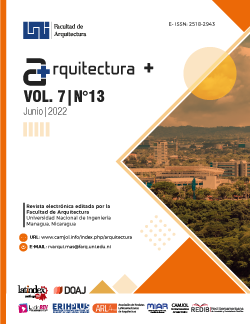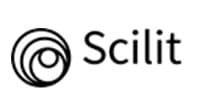CO2 and PM2.5 at teaching office from Unitarians Operations Department
DOI:
https://doi.org/10.5377/arquitectura.v7i13.14438Keywords:
Interior air quality, pollution, monitory, environment, normAbstract
In the present paper is exposed the study of Carbon Dioxide (CO2) and Particulate Matter (PM2.5) at Unitarians Operations Department teachings office, at Faculty of Chemical, Simon Bolivar Place of National Engineering University, in the period October of 2020 to March of 2021. In order to get this a monitoring was made in workable hours for the parameters PM2.5 and CO2, at interior and exterior environment near to teachings office. It was determined the statistical parameters of the two variables, the temporal profile of each variable, and it was evaluated the fulfill of the air quality standards at interiors places according to OSHA and ACGIG guides. It was determined that the parameters PM2.5 and CO2 at teachings office fulfill the guides values of interiors air quality.
Downloads
1128
References
American Conference of Governmental Industrial Hygienists (ACGIH). (2010). TLVs and BEIs. Based on the documentation of the threshold limit values for chemical substances and physical agents & biological exposure indices. Cincinnati (OH): ACGIH; 2010 Mar. 272 p.
Environmental Protection Agency (EPA-US). (2008). Care for Your Air: a Guide to Indoor Air Quality. EPA 402F-08/008. https://www.epa.gov/indoor-air-quality-iaq
Environmental Protection Agency (EPA-US). (2009). Indoor Air Quality Tools for Schools Reference Guide. EPA 402K-07/008. https://www.epa.gov/indoor-air-quality-iaq
Environmental Protection Agency (EPA-US). (2021). Regulatory and Guidance Information by Topic: Air. https://www.epa.gov/regulatory-information-topic/regulatory-and-guidance-information-topic-air
Instituto Nacional de Seguridad e Higiene en el Trabajo. (2010). NTP41: Caracterización de la calidad del aire en ambientes interiores. España.
Ministerio de Fomento, Industria y Comercio (2002). NTON 05 012-02 Norma Técnica Nicaragüense de Calidad del Aire. La Gaceta Diario Oficial. No. 211. 2002, 6, Noviembre.
Occupational Safety and Health Administration (OSHA). (2011). Indoor Air Quality in Commercial and Institutional Buildings. https://www.osha.gov
World Health Organization (WHO). (2006). Air quality guidelines. Global Update 2005: Particulate Matter, Ozone, Nitrogen Dioxide and Sulfur Dioxide. Risk evaluation summary.
World Health Organization, Ginebra, Suiza.World Health Organization (WHO). (2010). WHO guidelines for indoor air quality: selected pollutants. http://www.euro.who.int/__data/assets/pdf_file/0009/128169/e94535.pdf
World Health Organization (WHO, 2021). Global Air quality Guidelines: Executive Summary. WHO. https://apps.who.int/iris/handle/10665/345334
Downloads
Published
How to Cite
Issue
Section
License
Copyright (c) 2022 Universidad Nacional de Ingeniería

This work is licensed under a Creative Commons Attribution-NonCommercial-NoDerivatives 4.0 International License.



















